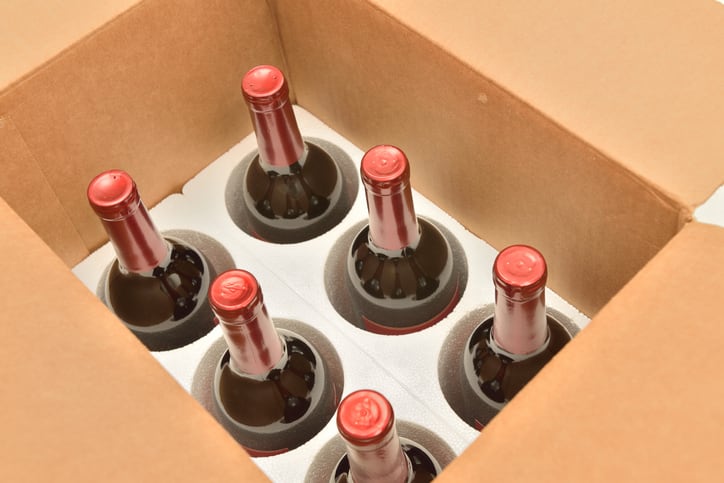Trump’s tariffs, announced yesterday, start at a baseline of 10% for imports. These have then been raised for different countries and categories. Wine from the EU will have a 20% tariff.
Wine organizations are uneasy. A 20% tariff will hit the industry hard: but it is not the 200% tariff threatened by Trump over steel and aluminum disputes... That issue is yet to be resolved.
US market importance
The US is the largest export market for EU wines, valued at around €4.88bn ($5.4bn), according to industry association Comité Européen des Entreprises Vins (CEEV). Exports to the US account for around 28% of total EU wine exports, making it a highly significant market.
“The US wine market is fundamental for the economic sustainability of the EU wine sector,” said Marzia Varvaglione, President of the Comité Européen des Entreprises Vins (CEEV), reacting to the 20% tariffs this morning.
She warns the tariffs will damage the industry: with economic uncertainty, layoffs, deferred investments and price increases: “Targeting EU wine will only make losers on both sides of the Atlantic”.
Trade relationship
The EU and US wine sectors have created a close relationship to keep free and open markets for wine. It is, in fact, the largest wine trade relationship in the world and a key driver for US and EU wine export growth, according to CEEV.
This collaboration has been based on a 2020 joint statement of EU US Declaration of Principles on Trade in the Wine Sector, highlighting the importance of free and fair trade in the wine industry.
The US Wine Trade Alliance (USWTA) is also strongly opposed to the wine tariffs.
That’s because tariffs on imported wine also harm American businesses (for every $10 a U.S. restaurant sells of foreign wine, $9 stays with American companies, says the organization).
Small businesses are particularly vulnerable: whereas foreign producers can sell to other markets, small businesses don’t have this option.
And a hit on the wine trade will have knock-on effects, it warns.
“Restaurants will suffer, domestic producers will face new obstacles in bringing their wines to market, and retailers, importers, and distributors across the country will be placed at serious risk,” says a statement from the organization. “With their biggest profit center decimated, many restaurant investors will decide to take their money elsewhere.”
Analysts and stakeholders are now calculating out how big a difference a 20% tariff will make to EU wine imports.
The threatened 200% tariff could be expected to wipe out imports of wine: putting them far out of reach of the vast majority of consumers.
A 20% tariffs will undoubtedly hit the industry hard, yet some higher end establishments and consumers will be prepared to pay.
FEVS, a French wine and spirits exporter federation, says it ‘profoundly regrets’ the US’ decision that penalized exporters on both side of the Atlantic, alongside associated industries such as importers, wholesalers and retailers.
French producers, it says, can expect to see an €800m decline in exports (hitting the €4.6bn exports seen annually and representing a 17% decrease).
“This affront of tariffs only has losers: both in Europe and the US,” said Gabriel Picard, President of the FEVS. “Elsewhere, our American counterparts, with whom we have worked with for decades, carry the same message to the American authorities.”
Vins de Bourgogne, which represents the French region, highlights that the tariffs are a strange mix of ‘astonishment and measured relief’.
“While this new measure will affect exports - potentially costing Bourgogne wines up to 100 million euros - it will not bring trade to a sudden halt, as would have been the case with higher tariffs,” says the organization.
In fact, wine already suffered from 25% tariffs in 2019 as part of the Boeing-Airbus dispute.
Exports from the region plummeted 15% in volume and 22% by value: a severe, but not catastrophic blow to the industry.
Reshaping the US wine market
70% of the wine by volume consumed in the US is produced domestically, according figures shared with us by IWSR, the global leader in beverage alcohol data and insights.
Around 20% of the wine by volume consumed in the US originates from the EU.
Then 10% of volume comes mainly from wines imported from Latin America, Australia, New Zealand and South Africa.
So how will this 30% of imported wines be affected? There will be a reshuffle according to tariffs: for example, Australian wines will attract the baseline 10% on imports; yet will be less affected than others. French, Italian and Spanish wines will be affected by the 20% tariff on EU imports; whereas South African wines will be hit by a higher 30%.
Domestic wine – such as wines from California and Oregon – may have the potential to fill some of the gap.



